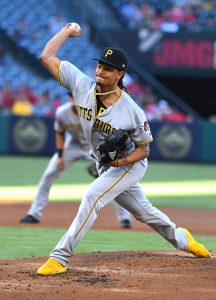For the time being, MLB rosters are not locked. There’s still a trickle of transactional news. Odds are, we’ll see some sort of agreement to freeze roster movement — including, presumably, an orderly process for tying up any pending decisions and then ramping back up in advance of a hopeful resumption of play. Once that’s sorted, there could be a flurry of moves before the hold goes into effect.
But really, that’s beside the point when it comes to extensions. Deals can be negotiated at any time, even if it’s necessary to wait to make them official. Even if there’s a halt to transactions for a stretch, teams and agents and players can talk about their futures.
It’s hardly an optimal time to be broadcasting a major new contract, for a variety of reasons. But we are seeing NFL dealmaking happen as if the football season will begin as normal. And it probably behooves us all to keep one eye on the future.
In the baseball context, the major free agent action was already completed — Yasiel Puig excepted. But we were right smack dab in the middle of extension season when the coronavirus crisis hit. And there was some indication that, on the heels of a robust free agent market, we were due for a varied and voluminous slate of new deals.
In some respects, it’s the close in-person proximity of Spring Training that makes extensions so prevalent. But it’s also a function of MLB’s calendar, most of the rest of which is occupied by the playing of games or execution of other business.
Under the present circumstances, there’s quite a strong case for utilizing the time off to consider longer pacts. The time pressure of the coming season has been released momentarily, but it’ll eventually ramp back up and help finalize talks. But whatever truncated second spring ultimate occurs later this year isn’t likely to represent an optimal time for long-term negotiations. Teams will be slammed with season preparations and unusual logistical demands.
If there’s to be another run of new deals, it’ll likely emerge from prior talks that continue during the present lull, even absent the ready ability to chat face-to-face. But the halt to sports also injects potentially massive uncertainty that could itself impact negotiations. Players’ 2020 salaries are already set, but they’re presumably not going to be paid out in full. Some players may be more inclined to secure their financial futures; some teams may wish to avoid long-fuse risks while looking ahead to clogged revenue streams.
No doubt the onset of the coronavirus shutdown halted many negotiations in mid-stream. Perhaps some deals were already reached in principle before the league went on ice. In all periods of uncertainty, there’s added risk and added opportunity. It will be interesting to see how players and teams approach extensions over the coming months — whether or not a moratorium on formal dealmaking forces us to wait for the outcomes.

